Discover 11 hidden attractions, cool sights, and unusual things to do in Peterhead (United Kingdom). Don't miss out on these must-see attractions: Peterhead Baptist Church, Balmoor Stadium, and Reform Monument. Also, be sure to include Balmoor Bridge in your itinerary.
Below, you can find the list of the most amazing places you should visit in Peterhead (Scotland).
Table of Contents
Peterhead Baptist Church
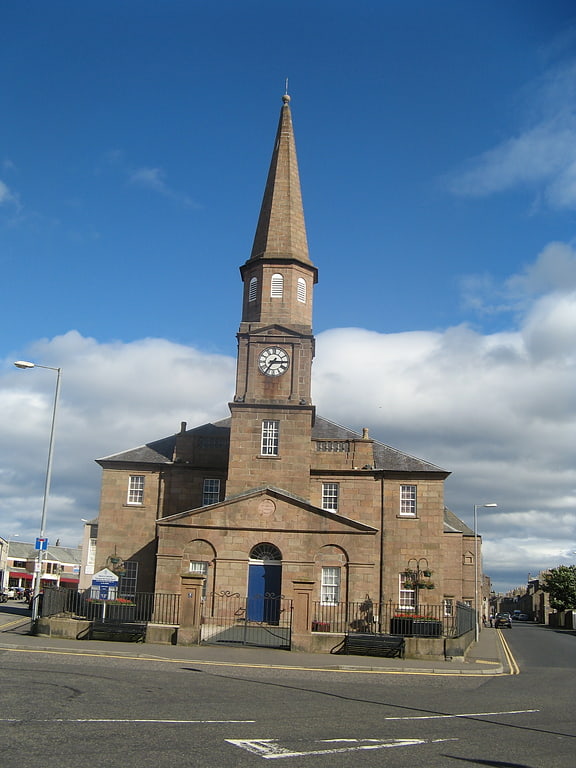
Old Parish Church is a Category A listed building located on Maiden Street in Peterhead, Aberdeenshire, Scotland. Local brothers Robert and John Mitchell built the church between 1804 and 1806, to a design by Alexander Laing, of Edinburgh. Its Burgerhuys bell dates to 1647.
The church closed in 2016, and its congregation merged with Peterhead's Trinity Church to form Peterhead New Parish Church.[1]
Address: 51 King Street, Peterhead
Balmoor Stadium

Stadium in Peterhead, Scotland. Balmoor is an association football ground in the Scottish town of Peterhead, Aberdeenshire. It is home to Peterhead. The stadium has a capacity of 3,150 spectators, of which 1,000 can be seated.
The ground was opened in 1997, after Peterhead's old Recreation Park ground was sold off to supermarket company Safeway. The standard of the facilities at Balmoor was one of the main reasons why Peterhead were elected to the Scottish Football League in 2000, along with Elgin City.
The record attendance at Balmoor is 4,855, for a Scottish Football League Third Division match against Rangers on 20 January 2013. This broke the previous record crowd of 4,505.
The nearest railway station to Balmoor is Aberdeen railway station, which is 32 miles (51 km) away. This is the greatest distance between a senior league football ground and its nearest railway station in Great Britain. Balmoor is located on the A982 road, just north of Peterhead town centre.[2]
Address: Balmoor Stadium Balmoor Terrace, AB42 1EQ Peterhead
Reform Monument
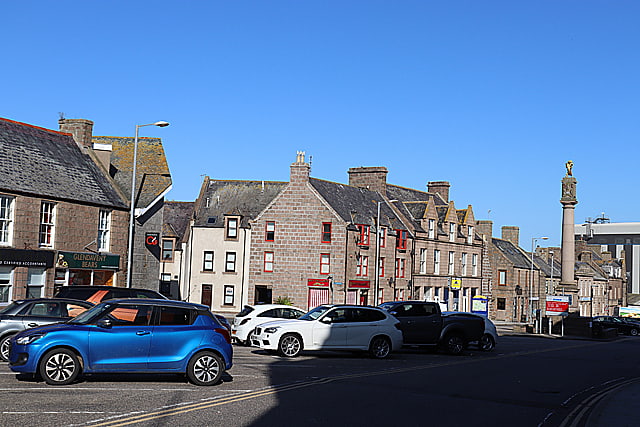
Historical landmark in Peterhead, Scotland. The Reform Monument is a Category B listed monument on Broad Street, at its junction with Longate, in Peterhead, Scotland, built in 1833. A Roman doric column, it is surmounted by arms of Earl Marischal, inspired by the gateway of Inverugie Castle.
The Reform Monument should not be confused with the Reform Tower in the Meethill area of Peterhead, built a year earlier.[3]
Balmoor Bridge
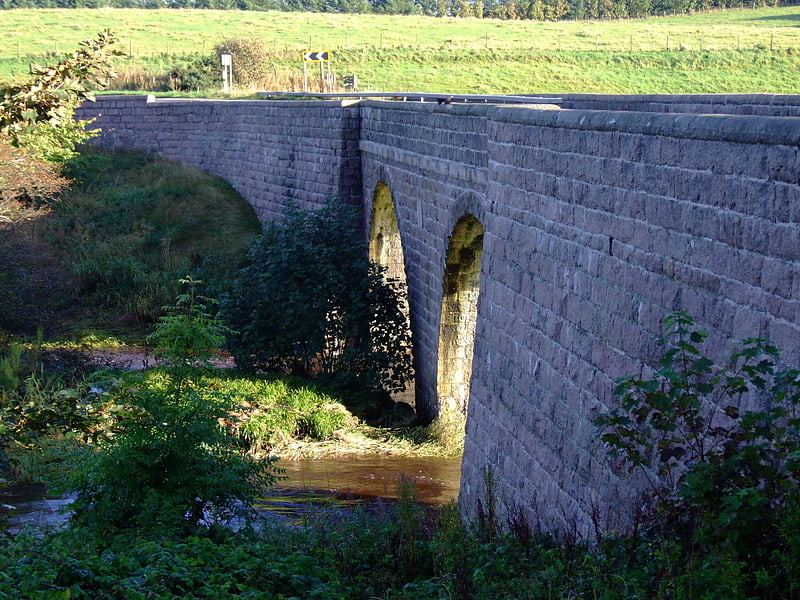
Bridge. Balmoor Bridge is a toll-free, three-span bridge in Aberdeenshire, Scotland. A Category B listed structure, it spans the River Ugie, carrying the two lanes of traffic of the A90 to or from Peterhead to the south or St Fergus to the north. It was designed by John Willet, and features two semi-circular arches and voussoirs.[4]
1 Harbour Street

1 Harbour Street is a Category B listed building in Peterhead, Aberdeenshire, Scotland. Dating to the late 18th century, the building stands at the corner of Jamaica Street, onto which the property's garage faces.
Harbour Street was, in 1739, described as "presently a building". The footprint of the building is clearly shown on the Ordnance Survey's large scale Scottish town plan, surveyed in 1868.[5]
Fish-House
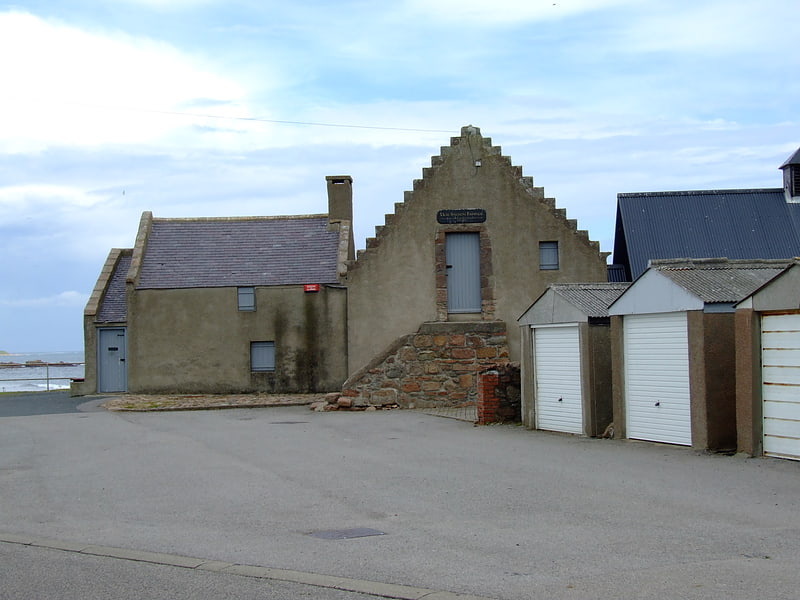
The Fish-House is a Category B listed building on Golf Road in the Inverugie area of Peterhead, Aberdeenshire, Scotland. One of the two right-angled blocks dates from 1585, making it the oldest building in Peterhead. Walker and Woodworth state the structure was built as a coastal store for Inverugie Castle by William Keith, 4th Earl Marischal, whose initials are on a skewputt. They also state that it was "rebuilt c. 1801," but without clarification as to which building.
The property is still in operation, as the home of the Ugie Salmon smokehouse. The addition, which is not attached to the original building, was added the following century.
The original section of the building has a crow-stepped gable with a forestair up to the loft.
The road on which it stands is so-named because it leads to Peterhead Golf Club, although that was established over 250 years after the fish house.[6]
75 Broad Street
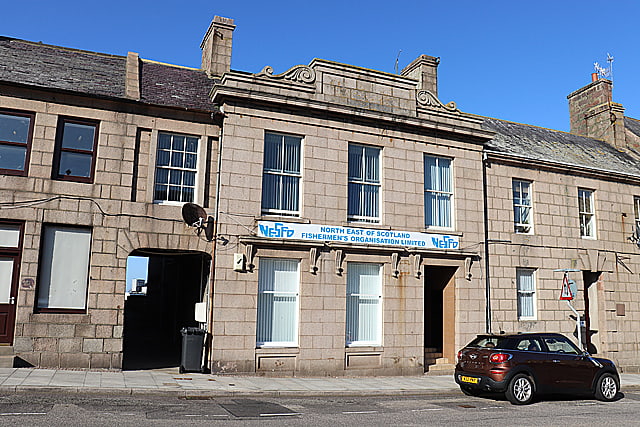
75 Broad Street is a Category B listed building in Peterhead, Aberdeenshire, Scotland. It dates to 1835, and was originally a Clydesdale Bank. It is believed to have been designed by Archibald Simpson.
As of 2020, the building is home to the offices of the North East of Scotland Fishermen's Organisation.[7]
Peterhead Town House
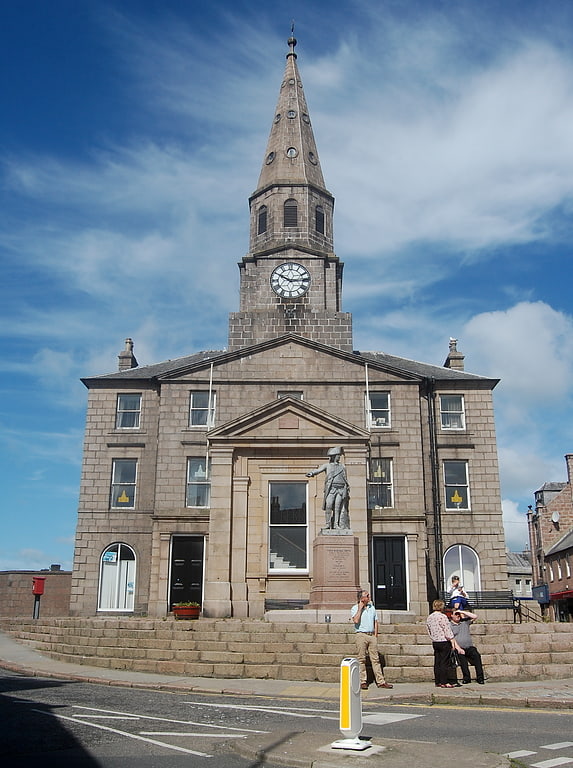
Peterhead Town House is a municipal structure in Broad Street, Peterhead, Aberdeenshire, Scotland. The building, which was the headquarters of Peterhead Burgh Council, is a Category B listed building.[8]
Howe o'Buchan House

The Howe o'Buchan House is a Category C listed building on Inverugie Road in Peterhead, Aberdeenshire, Scotland. It dates from 1840, and is a two-storey residential building. The house contains a marble chimneypiece that dates from circa 1805. It also contains a sculptured panel and bannisters which originated from Brucklay Castle.
By 1853 Howe o'Buchan was the home of Thomas Walker, one of four brothers whose family had originated at Waulkmill and Bankhead in New Aberdour who between them owned the neighbouring estates of Richmond, Balmore, Grange, and Howe o'Buchan. When the railway station opened in Peterhead, the water needed for the engines was pumped from Howe o'Buchan.[9]
Sandford Lodge

Sandford Lodge is a Category B listed building in Peterhead, Aberdeenshire, Scotland. A former farmhouse, described by Charles McKean as a "miniature mansion house", it was built around 1800; today, only the shell of the building remains, after a fire in the early hours of 8 August 2015.
James Skelton (1799–1882), sheriff substitute of Peterhead and possibly the original owner, was resident at the lodge in 1856. His wife was Margaret Marjory (née Kinnear) (1805–1878). Their only daughter, Janet Georgina (1832–1860), wed James Mitchell, minister of Peterhead's Deer Church, at the lodge on 7 September 1859, but she died the following year, aged 27. Their son was Sir John Skelton.
William Aiton lived there in 1873. He was one of the original contractors for the construction of the Suez Canal, and was also contracted for the Maybole and Girvan Railway. In April and May 1865 he worked with Thomas Inglis of Glasgow on a survey of the Great Pyramid of Giza. He died in February 1893, being "upwards of 70 years of age".
In the early 19th century, the lodge was the home of Private Robert Willox, of the Gordon Highlanders. He died as a prisoner of war in the Second World War on 7 June 1943, aged 25, after suffering from beriberi, and was buried in Kanchanaburi War Cemetery in Kanchanaburi, Thailand. He lived at the lodge with his parents, James and Margaret, of whom he was one of ten children. His parents are buried in Longside Cemetery, Longside, near Peterhead.
G. Anderson lived at the lodge in the late 19th century.
James Sutherland (1851–1933) later ran his "great transport business in Peterhead" from the property. The business was a bus operator. "During his tenancy of the Sandford farm he had a grieve called Sandy Christie, and the foreman's name was Fordyce," wrote David Toulmin.
Peterhead Power Station was built adjacent to the property in 1978.[10]
59 Broad Street

59 Broad Street is a Category B listed building in Peterhead, Aberdeenshire, Scotland. Dating to the mid 18th century, the residential building stands with its gable end facing onto Broad Street. This was traditionally done because homeowners were taxed according to street frontage.[11]